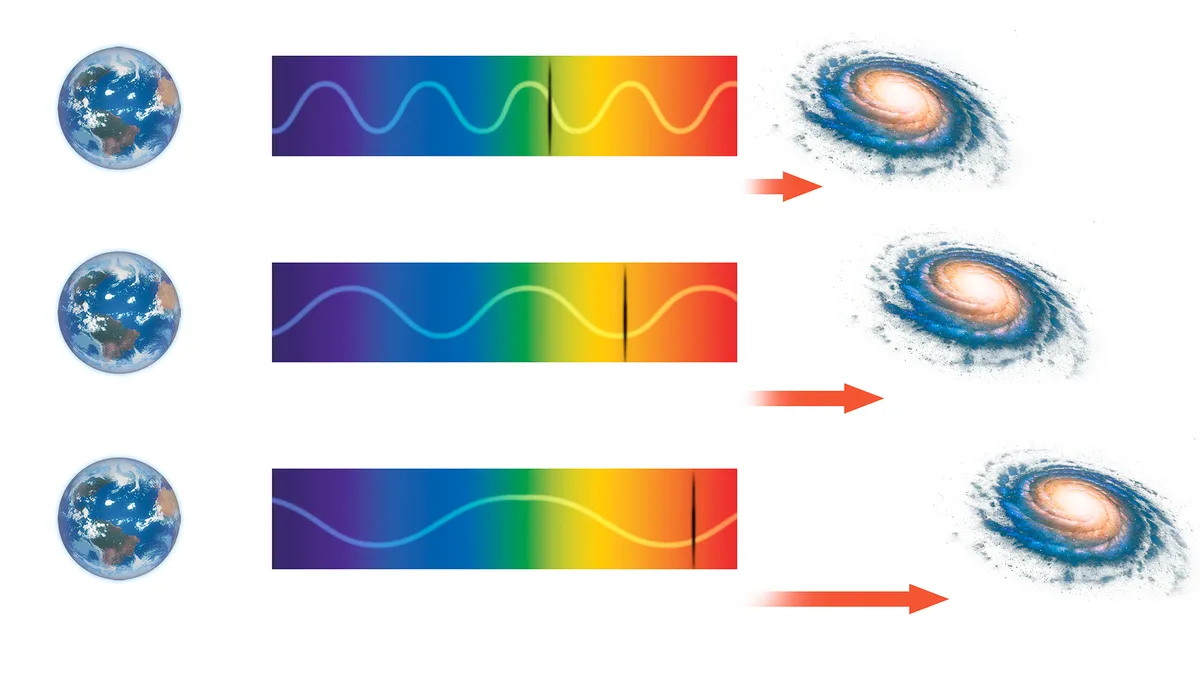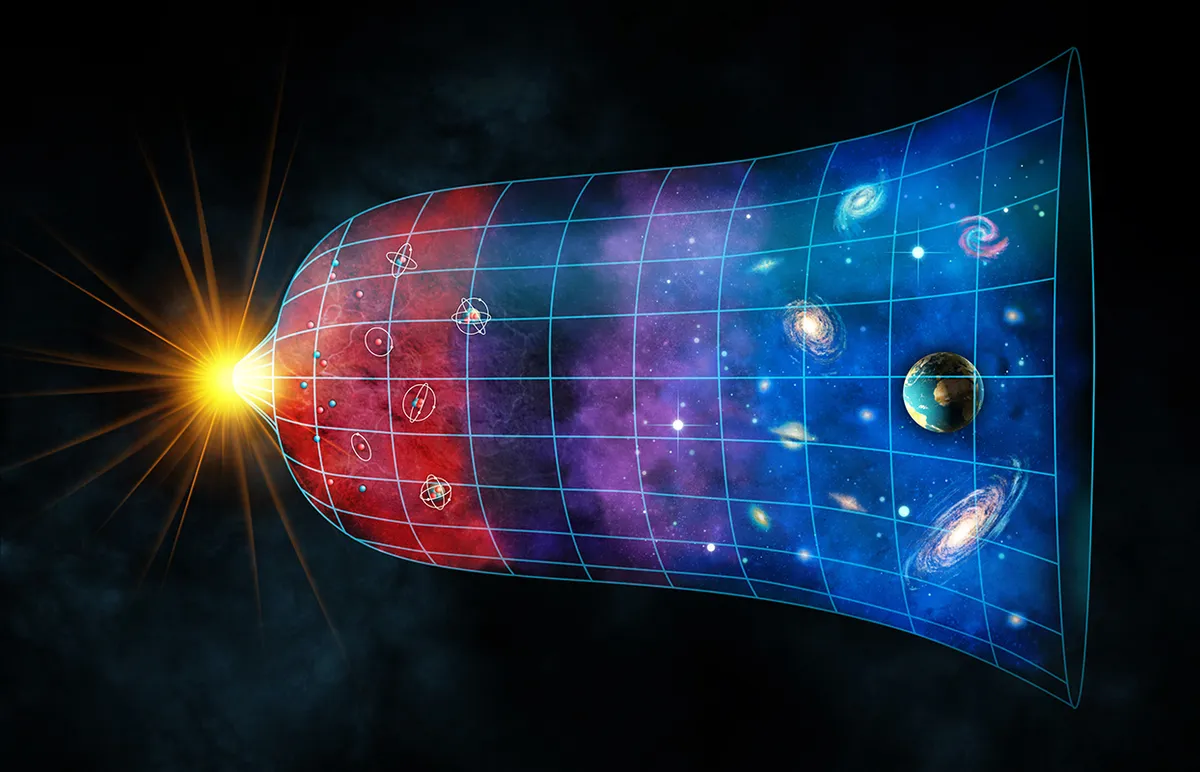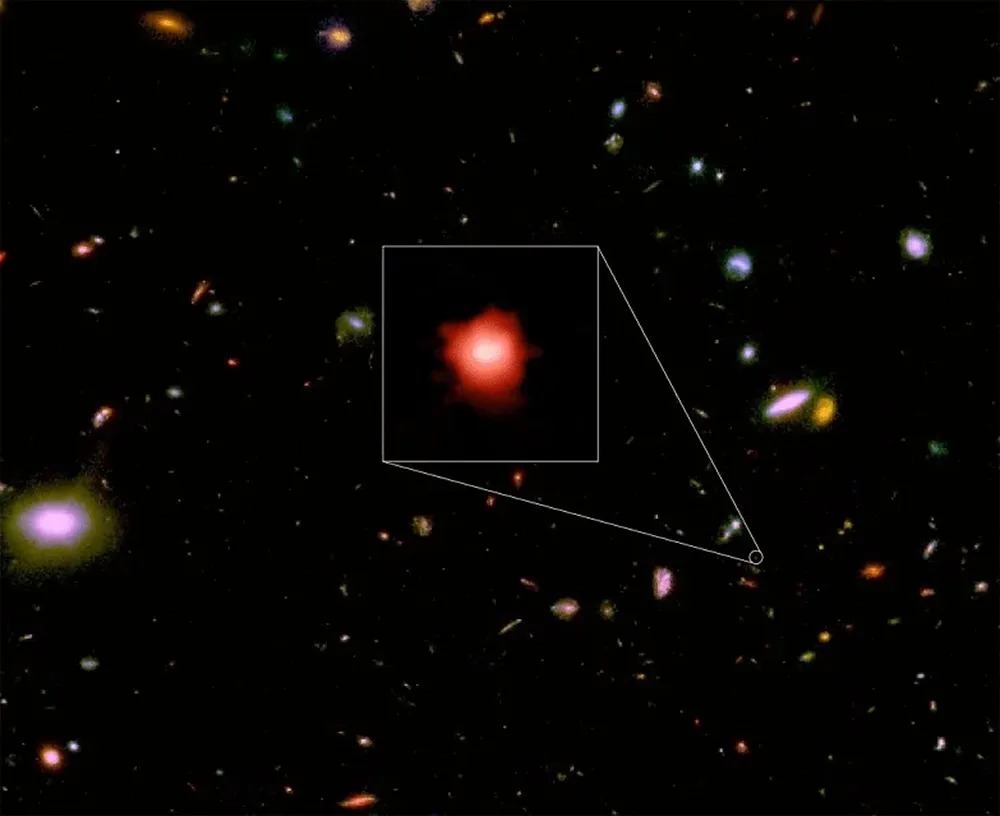Since the launch of the James Webb Space Telescope, there has been renewed interest in the most distant galaxies in the Universe, those with the highest ‘redshift’.
Redshift is a term many will have encountered before, but what exactly is it?
Why are galaxies redshifted? And how is redshift a measure of distance?
Redshift explained
Redshift is precisely what the name implies. Light is comprised of waves, the wavelength of which determines their colour.
The light of remote galaxies we observe with our telescopes has a slightly redder colour than the light emitted by that galaxy long ago – the wavelengths have shifted towards the red end of the spectrum.
But why does this happen?
Redshift and the Doppler effect
More often than not, this redshift is erroneously explained as a Doppler effect, where the motion of an object changes the wavelength it emits.
If it is moving away, then each new wave crest is emitted from a slightly larger distance away from the observer, so each subsequent wave crest takes longer to arrive, corresponding to a longer observed wavelength.
For sound waves, this would mean a lower pitch; for light, a redder colour.
In the case of an approaching light source, we observe a shorter wavelength (a higher pitch or ‘blueshift’).
The faster an object is moving towards or away from the observer, the larger the shift will be.

This phenomenon was predicted in 1842 by Austrian physicist Christian Doppler.
In 1845, the Doppler effect was first demonstrated for sound, in a famous experiment in which Dutch meteorologist Christophorus Buys Ballot put horn players on a moving train.
Observers on the platform heard the changing pitch – higher as the train approached, lower as it sped away.
Three years later, French physicist Armand Hippolyte Fizeau observed Doppler shift in the light of stars.
Using spectral features – bright lines that appear at specific wavelengths – he could tell how much its observed wavelength had shifted, revealing the star’s velocity along the line of sight: its radial velocity.
Observing redshift on larger scales, however, didn’t occur until 1912, when Lowell Observatory astronomer Vesto Slipher found that most galaxies displayed large redshifts, meaning they were receding at hundreds or even thousands of kilometres per second.
But the discovery of the expansion of the Universe, by Belgian cosmologist Georges Lemaître and his American colleague Edwin Hubble in the 1920s, turned everything on its head.
The thing is: galaxies are not racing through stationary space, as many people believe.
Instead, empty space itself is expanding, pushing galaxies ever further apart. If there’s no true space motion, the Doppler effect doesn’t come into play.

Redshifting and galaxies
So why are galaxies redshifted? Well, think of light waves with a particular wavelength emitted by a remote galaxy.
It may take many millions of years for these light waves to reach Earth.
During this time empty space is expanding, stretching the light waves along with it, so they arrive at Earth with a longer, redder wavelength.
This type of redshift is called the cosmological redshift.
And here’s the relation between distance and redshift: the further away a galaxy is, the longer its light takes to reach us.
A longer light travel time means more cosmic expansion, more wavelength stretching and thus a higher redshift.
Doppler shift from the galaxy’s motion through space may slightly adjust this cosmological redshift, but this is a minor effect for remote objects, so a galaxy’s observed redshift is usually a reliable indicator of its distance.
So forget the idea of galaxies speeding away from each other through space, and instead remember that space itself is expanding, continuously stretching light waves that propagate through it.

How astronomers describe redshift
Astronomers describe the redshift of light (denoted by z) using the percentage its wavelength has changed.
For example, if a galaxy’s visible light, emitted at a wavelength of 500 nanometres (nm), arrives at Earth at 700nm, it has been redshifted by 200nm.
That’s a change of 40%from the original, so its redshift is z = 0.4.
Looking back in time

The further out into space you look, the further back in time you are seeing.
The most remote galaxies ever observed are so far away that their light – even though it moves at the incredible speed of 300,000km per second – has taken more than 13 billion years to reach Earth, meaning we are seeing them as they were in the childhood days of the Universe.
Back then, the very first stars emitted copious amounts of energetic ultraviolet light, at typical wavelengths of a few hundred nanometres.
But thanks to the long light travel time and the corresponding large cosmological redshift, these high-energy light waves get redshifted all the way into the infrared part of the spectrum, at wavelengths of a few micrometres.
That’s one of the reasons why the James Webb Space Telescope is outfitted with infrared cameras and spectrometers – it’s the only way to study the most distant and earliest galaxies in the Universe.
This guide originally appeared in the January 2023 issue of BBC Sky at Night Magazine.
